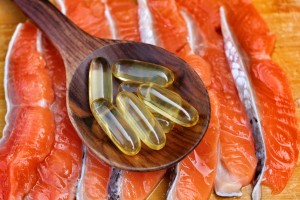 This amazing article shows you how to calculate membrane susceptibility to peroxidative damage. A membrane containing just 5% DHA (fish oil) can be 16 times more susceptible to peroxidative damage. The hundred trillion cells of each patient are at risk from overdosing on fish oil. Although not necessarily adulterated before consumption, all marine oils are immediately subject to it after consumption.
This amazing article shows you how to calculate membrane susceptibility to peroxidative damage. A membrane containing just 5% DHA (fish oil) can be 16 times more susceptible to peroxidative damage. The hundred trillion cells of each patient are at risk from overdosing on fish oil. Although not necessarily adulterated before consumption, all marine oils are immediately subject to it after consumption.
Below are Dr. Hulbert’s explanation immediately exposes the dangers of fish oil:
- “Docosahexaenoic acid (22:6), which has six double bonds and consequently five bis-allylic hydrogens per chain, is 320 times more susceptible to [anti-oxidant] attack than the common monounsaturated oleic acid (18:1) which has ‘‘no’’ bis-allylic hydrogens in its chain.” … and warns of additional DNA and protein DAMAGE:
- “Membrane lipid peroxidation should not be perceived solely as a ‘damage to membranes’ scenario but also as a significant endogenous source of damage to other cellular macromolecules, such as proteins and DNA (including mutations).”
Bis-allylic (weak-bonded) hydrogens in the cellular membrane are the most susceptible to attack.
Aside from PhDs in chemistry, the medical profession is not used to this biochemical term or the superior Peroxide Index (PI). The more polyunsaturated the oil is, the more bis-allylic chains are present. Fish oil’s DHA (22:6) has five of them and therefore, is enormously more reactive than the monounsaturated oleic (olive oil), which contains none, and seven times more reactive than Parent omega 6. To combat this oxidation, your body is forced to “use up” its reserve of anti-oxidants, leaving other areas vulnerable.
Mike Maunu – Founder
Oxygen4Life.com
